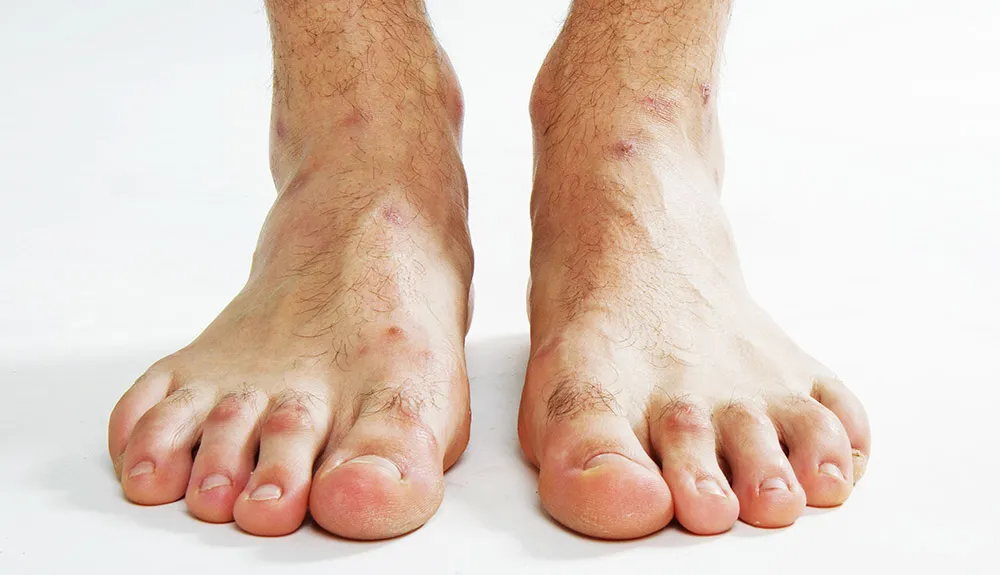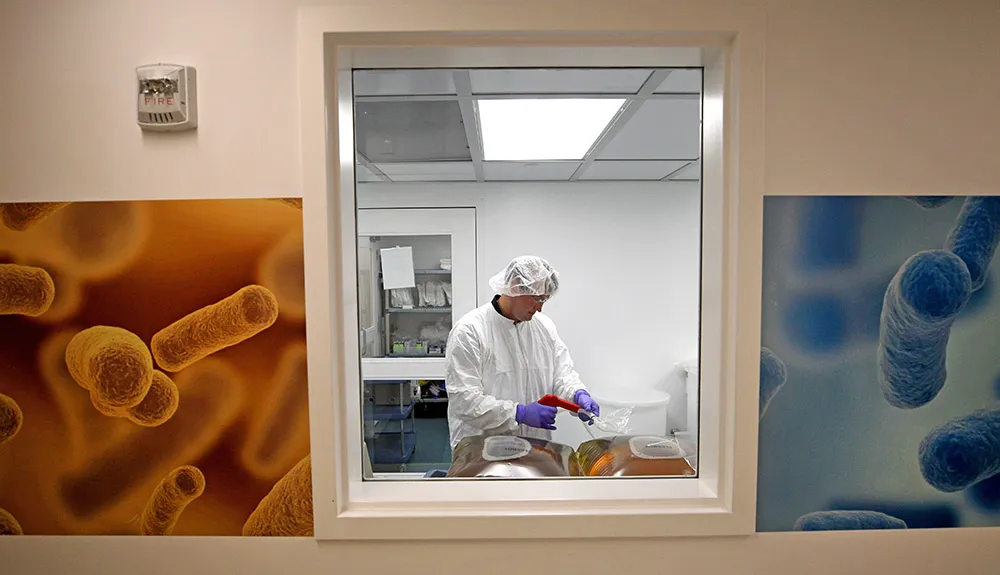Your body is crawling with bacteria and fungi. But don’t worry: most of them are there to keep you alive - welcome to the wonderful world of the human microbiome.
What is the microbiome?
In any human body there are around 30 trillion human cells, but our microbiome is an estimated 39 trillion microbial cells including bacteria, viruses and fungi that live on and in us.
Due to their small size, these organisms make up only about 1-3 per cent of our body mass, but this belies the microbiome's tremendous power and potential.
We have around 20-25,000 genes in each of our cells, but the human microbiome potentially holds 500 times more.
Moreover, the ability of microbes to evolve quickly, swap genes, multiply and adapt to changing circumstances give them – and us, their hosts – remarkable abilities that we’re only now beginning to fathom.
Where is the microbiome?
The human body provides a broad range of environments, and microbes are capable of living in all of them.
Each part of the body is a different type of ecosystem, like a planet with different continents and climates, the inhabitants of which have adapted to the characteristics of each location.
Our faces and hands are dry and cool. They’re exposed to the elements, not to mention a constant stream of immigrant microbes every time we touch or come close to another thing.
Nooks and crannies like the armpits have a lot to offer bacteria, being moist, warm and dark.

The average human foot is even better, with 600 sweat glands per square centimetre – hundreds more than the armpits – that secrete a soup of salts, glucose, vitamins and amino acids, providing the perfect diet for a colony of bacteria.
Then there is the gut microbiome, where thousands of native bacteria live in partnership with us. They survive a hostile environment of darkness, high acidity and low oxygen, in what is a tumultuous river flushing through the stomach and intestines.
Where do these microbes come from?
Three-quarters of your microbiome can be traced back to your mother. The womb is a sterile place, free of microbes (at least we think so at the moment). But when we exit via the birth canal, we’re bathed in vaginal microbes.
This literal baptism of bacteria may be vital to a healthy start in life – babies who are born through caesarean section are more likely to develop allergies, asthma, coeliac disease and obesity later in life.
We also ingest around a million microbes in every gram of food, and our diet has a direct impact on which species thrive in our gut microbiome. If we change diets, from meat-eater to vegetarian, for example, the gut bacteria changes accordingly.

Similarly, as we go through life, moving from one environment to another, we’re exposed to microbes from different people and places.
Every home has a distinctive microbiome that comes from the people who live in it. Just 24 hours after moving into a new home we’ve colonised it with our microbes.
And those who grow up in a household with pets are exposed to a far bigger array of microbes, which is no bad thing.
Scientists suspect that a lot of common modern allergies, such as hay fever, are triggered by an immune system that didn’t learn to live with such microorganisms at an early age.

What does our microbiome do?
Lots. The gut microbiome controls the storage of fat and assists in activating the genes in human cells involved with absorbing nutrients, breaking down toxins and creating blood vessels.
These helpful microorganisms replenish the linings of the gut and skin, replacing damaged and dying cells with new ones. Equally vital is their role in preventing illness.
Our native microbes compete with invading ones, preventing them from getting a foothold. We’re born with an immune defence system only partially formed.
It’s the interaction with microbes that shapes it, influencing the classes of immune cells that are generated and the development of the organs that make and store them.
As Ed Yong says in his book I Contain Multitudes, “The immune system is not innately hardwired to tell the difference between a harmless symbiont and a threatening pathogen... it’s the microbe that makes that distinction clear.”
The human microbiome even affects how we smell. Different microbe species might convert sweat into the smell of onions, or testosterone into the stink of urine, which act as strong signals for our friends and foes.
These smells are highly personal: studies have found people can be identified just from their sweaty T-shirts.
Scientists also think that our microbiome may be a significant contributor to why we get jetlag.
The change in sleep patterns puts the rhythm of our gut bacteria out of sync with our own behaviour, so different species are active at the wrong times.
Read more about the body and microbiome:
- From microbiome to mental health: The second brain in your gut
- Am I more bacteria than human?
- Bacteria: The miracle microbes that could fix planet
In fact, sleep is just one of the many ways through which microbes might affect our mood and behaviour. Finally, our microbiome helps dispose of us in what has been dubbed the ‘thanatomicrobiome’. After we die, the immune system stops working, leaving our microbes to spread freely.
Our gut bacteria start digesting the intestines, and the surrounding tissues, from the inside out. Eventually, they invade the capillaries and lymph nodes, spreading to the liver, spleen, heart and brain as they feed on the chemical cocktail that leaks out of damaged cells.
Does the microbiome really affect behaviour?
It’s hard to tell if the microbiome is responsible for changes in diseases and behaviour, or if diseases and behaviour are responsible for the microbiome.
Experts are piecing together how gut microbes influence the brain through the hormones and molecules they produce but no one knows how important these are.
Drug companies, keen for new ways to treat neurological disorders, are investing money into research.

Do microbes interfere with each other?
The networks and interplays between different species of microbes are incredibly complicated.
Then there’s how external factors come into play. We know, for example, that the balance of two groups of bacteria – the Firmicutes and Bacteroidetes – affect obesity, but the link still isn’t clear or consistent enough to know how we might influence it.
And even if we were to find a potential treatment, there’s no telling if the body would accept it.
What makes a healthy microbiome?
How do you know if a microbiome is in disarray? Is a gut without a particular species unhealthy? And in comparison to what?
Defining what is ‘normal’ or ‘healthy’ for a human microbiome is important, and this may differ widely between countries, regions, communities, cities, and whether someone is young or old, rich or poor, outgoing or solitary.
This is a further challenge to the dream of personalised medicines for everyone, but in the meantime here are some tips to improve your gut microbiome.
- This article first appeared in issue 303 of BBC Focus - find out how to subscribe here
Jargon buster
Antibiotic - This is a medicine that inhibits the growth of, or destroys, microorganisms. The antibiotics are actually produced by bacteria themselves as a form of survival (or, some scientists think, ‘communication’ between each other).
Dysbiosis -This is a disruption to the harmony of symbiosis, where the microbial community shifts in a way that harms its host. The phrase is often applied to the human gut microbiome, where it describes a condition caused by too few beneficial bacteria and an overgrowth of bad bacteria, yeast, and/or parasites.
Microbe -Single-celled organisms so tiny that millions can fit into the eye of a needle.
Microbiota -‘Microbiota’ refers to a set of microscopic organisms. ‘Microbiome’ originally referred to their genomes – all the DNA of these organisms – but is now sometimes used in place of ‘microbiota’
Probiotic -A substance that stimulates the growth of microorganisms.
Symbiosis -This refers to the interaction between two different organisms living in close physical association, typically to the advantage of both.
The organisms that call our bodies home (and where to find them)
1
On the scalp
According to recent studies, dandruff is caused by the delicate balance of two common scalp bacteria: Propionibacterium and Staphylococcus.
2
In your armpit
When some bacteria encounter sweat, they produce pungent compounds called thioalcohols. Staphylococcus hominis is one of the worst offenders.
3
In your faeces
Given the huge numbers of microbes in the gut, it’s no surprise that many find their way into our poo – an estimated 30 per cent of solid waste is dead bacteria.
4
On your feet
The biggest cause of smelly feet might be Staphylococcus epidermidis, whose presence always seems to coincide with isovaleric acid – the smell of well-aged Stilton cheese.
5
In your mouth
Streptococcus mutans turns sugars into acid that erodes the enamel of our teeth, causing cavities.
6
All over your skin
Propionibacterium acnes lives deep within our pores and hair follicles, and can cause spots.
7
In your gut
The majority of our microbiome lives here, as many as 400 trillion microbes.
8
The vagina
Dominated by one species, Lactobacillus. This bacteria pumps out lactic acid, keeping the vaginal environment at a low, acidic pH that discourages other bacteria, yeast and viruses from thriving.